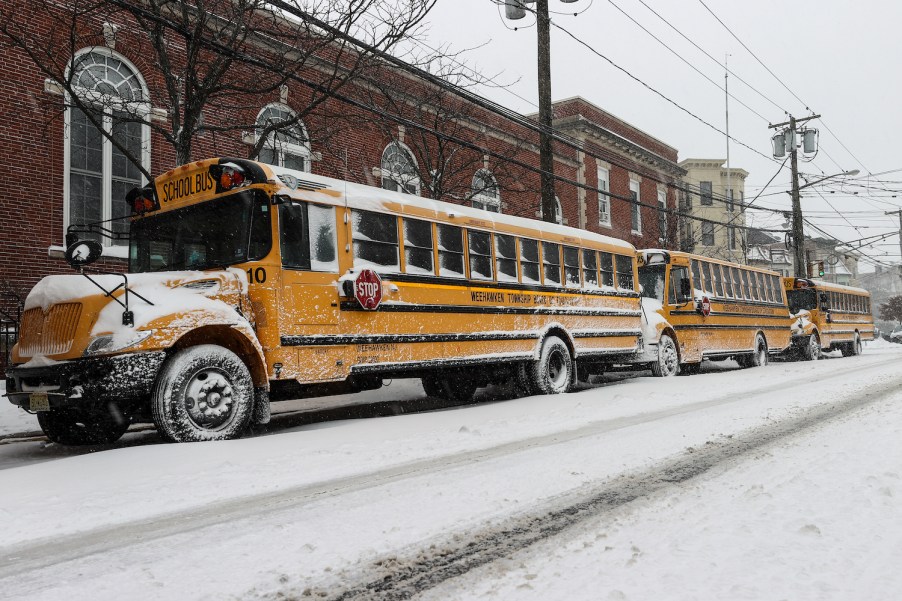
Why Are There Chains Hanging Under Some School Buses?
Have you ever noticed chains hanging beneath a school bus? They might seem like an odd accessory for a transport vehicle, but they have an important function. These chains are automatic tire chains the driver can deploy to increase traction–all without climbing out of the bus.
Do school buses use tire chains?

Tire chains were once ubiquitous in snowy climates. But as AWD and studded snow tires became the norm, you see them less often. Large vehicles such as school buses have even transitioned to automatic tire chains.
School buses could, conceivably, use traditional tire chains. Traditional tire chains are shaped a bit like rope ladders made out of chains. To install them, you wrap them along the length of the tire tread, then attach them to themselves.
Like bulldozer tracks, tire chains roll beneath the vehicle as it moves forward. As the tire rolls, these chain crossbars increase their traction in slippery conditions.
But installing tire chains is a difficult, time-intensive process that would not be especially realistic for school bus drivers to complete en route.
What are automatic tire chains?

Automatic tire chains accomplish the same things regular tire chains do: they roll lengths of chain between the tire and the road to increase traction. But instead of a bulky chain wrapping around the tire, automatic tire chains consist of a spinning head with multiple lengths of chain.
Most of the time, automatic tire chains hang limply from a vehicle’s frame. But when the driver deploys them, automatic tire chains fold down in front of the tires and activate.
Each automated tire chain unit includes a spinning head and multiple strands of chain. According to Mental Floss, most designs use the vehicle’s onboard air to extend the chain head and hold it against the tire sidewall. Then, the tire’s motion spins the head and centrifigal force tosses lengths of chain between the tread and road surface.
How fast can you drive with automatic tire chains?
According to automatic tire chain brand Onspot, you can drive up to 35 mph with its tire chains deployed. This is the same or higher than the maximum speed of traditional tire chains.

Onspot suggests you only engage and disengage your automatic tire chains while your vehicle is moving. This means that you should try to turn them on before you arrive at the worst of the road. If you do lose traction and cease to move forward, you should spin your wheels up to 5 mph before engaging the chains.
You can engage automatic tire chains at up to 25 mph. They work in both forward and reverse. They improve braking capability and decrease stopping distance by up to 10%.
Next, learn why some semi truck tires don’t touch the ground, or see automatic tire chains in action in the video below:



